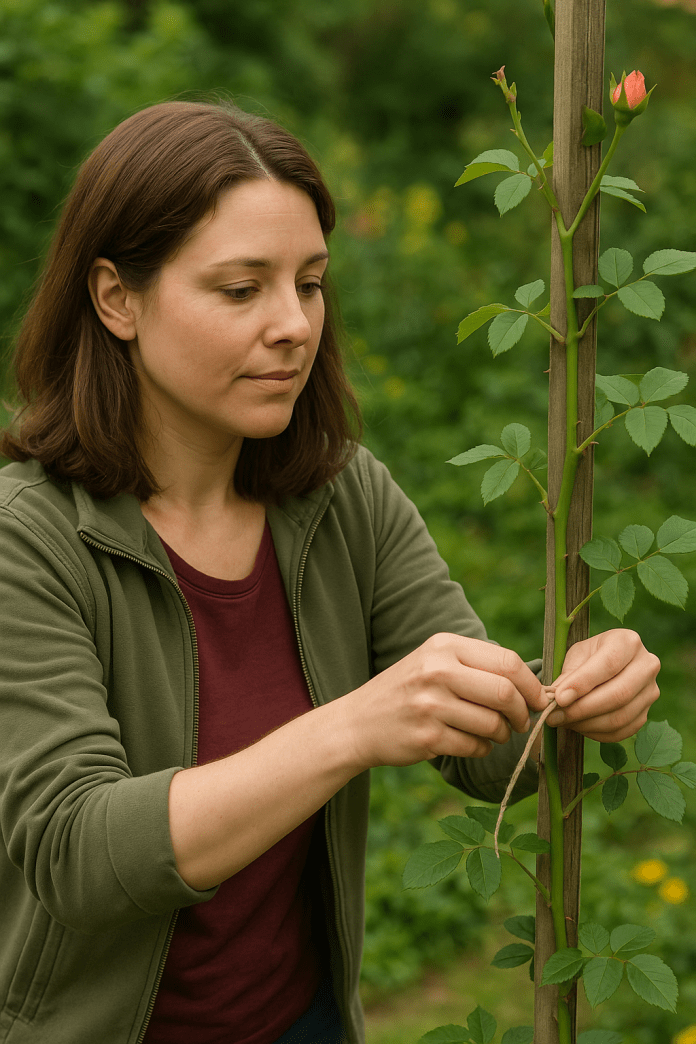May is a crucial month for roses in the UK garden. With warm days and cool nights, roses begin to push out fresh green shoots and the promise of summer blooms is just around the corner. A little care and attention now will set the stage for a long and healthy flowering season.
1. Feed for Flowers
Roses are hungry plants, and early May is the time to start feeding them. Use a specialist rose fertiliser that’s high in potassium to encourage strong, healthy growth and abundant blooms. Apply according to the instructions, usually scattering it around the base and watering it in well. Avoid feeding if the soil is very dry—water first, then feed a day later.
For organic gardeners, well-rotted manure or a top dressing of compost will also give roses a nutrient boost, though a balanced organic rose feed can be applied as an alternative to synthetic fertilisers.
2. Tie in New Growth
Climbing and rambling roses will be sending out long, flexible stems this month. Tie these in gently to supports, encouraging them to grow horizontally or diagonally. This training technique helps to stimulate flowering along the length of the stem rather than just at the tips.
Use soft ties or garden twine and avoid constricting the stems, which can damage tender growth. Regular attention to tying in makes for a much tidier plant and helps prevent wind damage later in the season.
3. Watch for Early Pests and Disease
May is when aphids (greenfly) first appear on fresh shoots and buds. They can be removed by hand, blasted off with water, or controlled using organic sprays such as insecticidal soap. Encourage natural predators like ladybirds and hoverflies by planting companion flowers nearby—marigolds, calendula and nasturtiums are excellent.
Also, keep an eye out for black spot, a common fungal disease on roses. This presents as black blotches on leaves, followed by yellowing and leaf drop. Remove and dispose of affected leaves (do not compost them), and consider applying a preventative fungicide if black spot has been a problem in previous years.
4. Mulch and Moisture
If you haven’t already, apply a thick mulch around the base of your roses. Use compost, well-rotted manure, or bark chippings. Mulch helps conserve soil moisture, suppress weeds, and improve soil structure—all of which contribute to better rose health.
As the month progresses, keep an eye on rainfall. While May can bring showers, young rose growth still needs consistent moisture. Water deeply once or twice a week during dry spells rather than little and often.
May at a Glance: Rose Checklist
- Feed with rose fertiliser or organic feed
- Tie in new shoots on climbing/rambling roses
- Check for aphids and black spot
- Mulch around the base to retain moisture
- Water deeply in dry weather
With just a bit of regular attention in May, your roses will reward you with lush growth and spectacular blooms in the months to come. A healthy rose in May is a happy rose all summer long.




